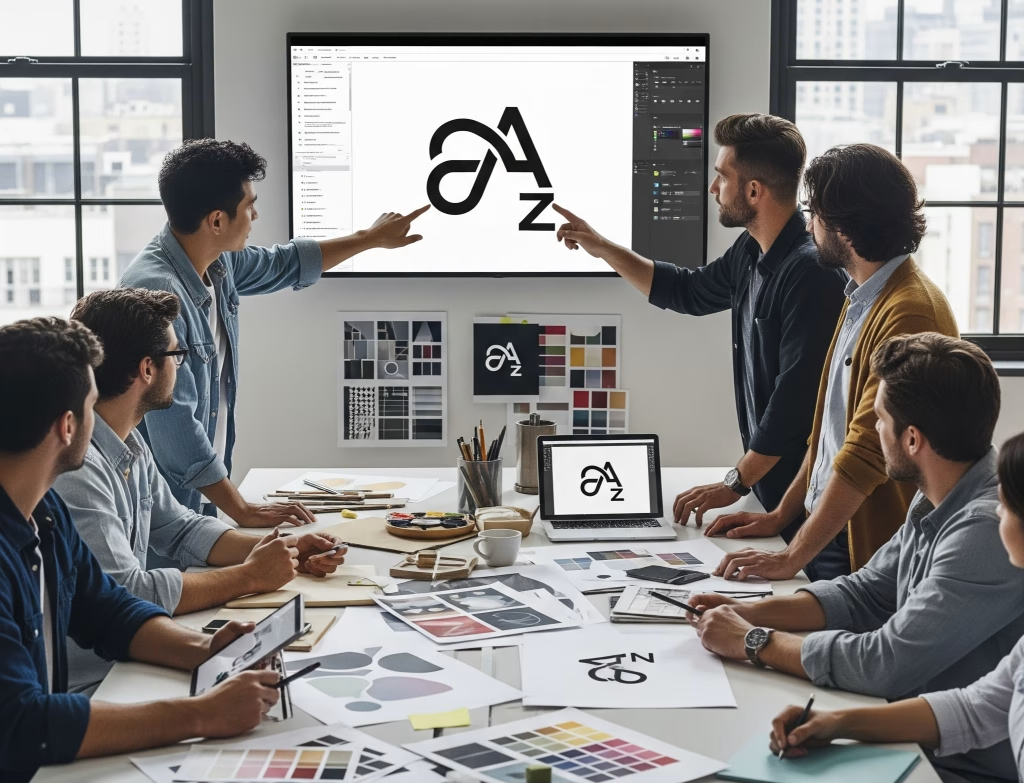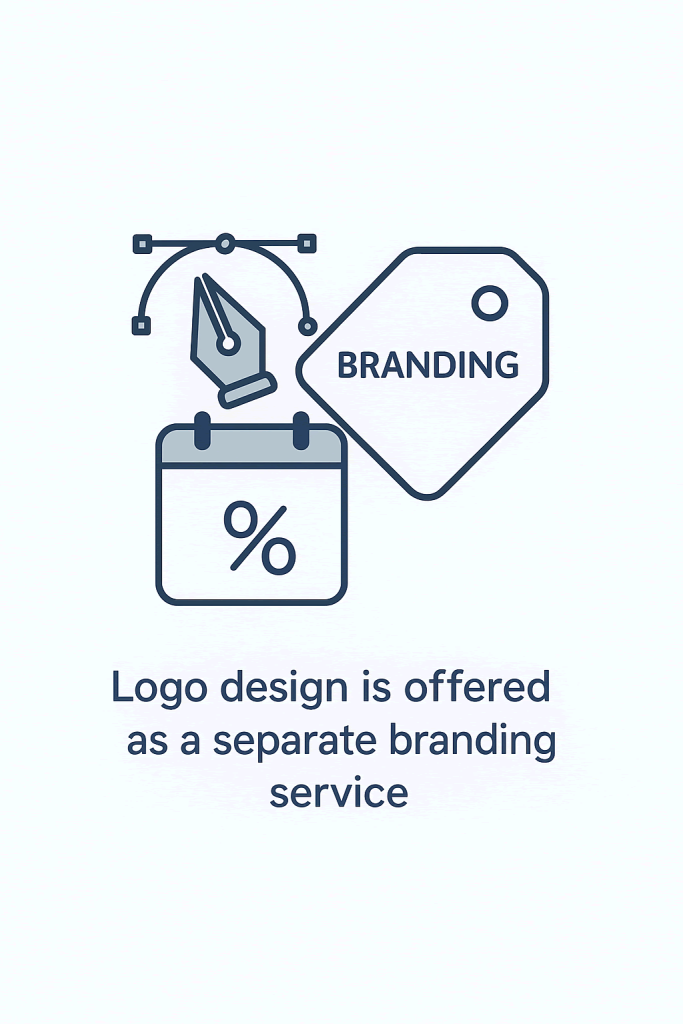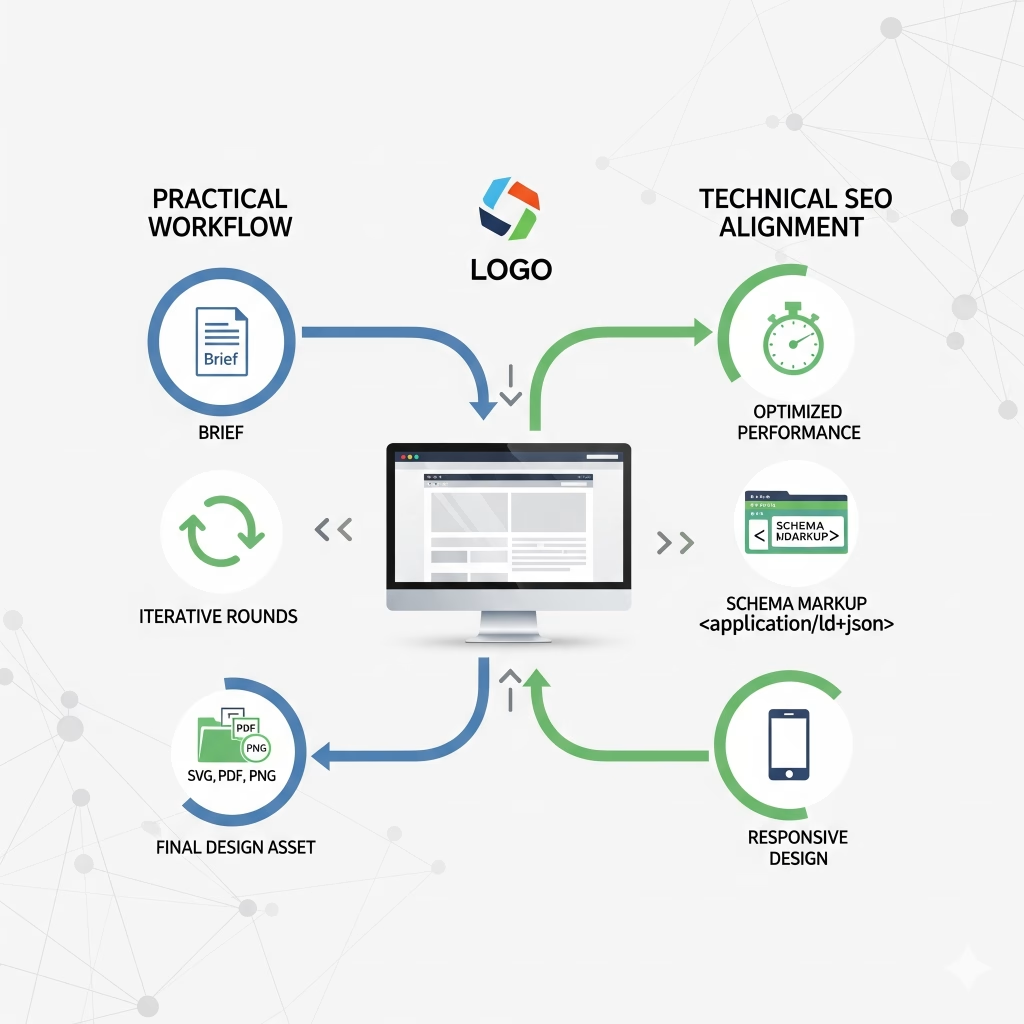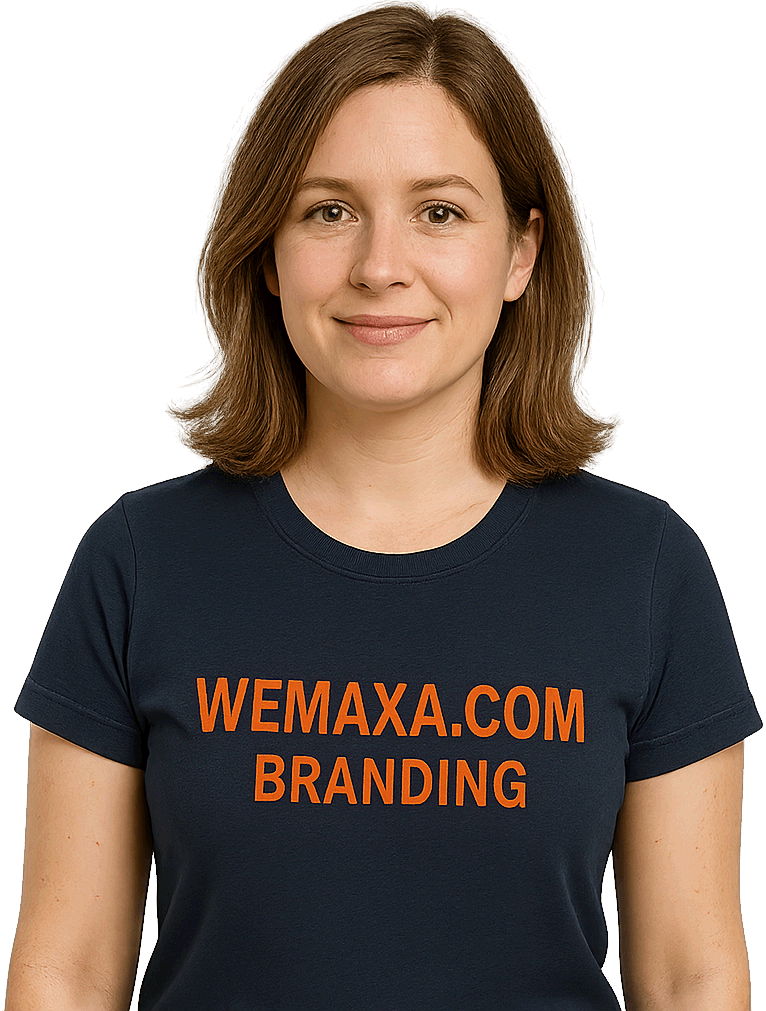
We can design your logo, and we tailor the entire process to fit your brand’s unique identity, message, and goals. Whether you’re looking for something minimal and clean, bold and corporate, or creative and artistic, our design team will craft a logo that reflects your style and resonates with your audience. We understand that your logo is often the first impression of your brand, so we treat it with the attention and precision it deserves.

The process begins with a collaborative discovery phase where we learn about your business, your target audience, and the personality you want your brand to express. From there, we explore visual directions, sketch concepts, and present multiple design options for your review. You’ll have the chance to give feedback and request refinements until we arrive at a final version that feels just right.
📋 How the Logo Design Process Works
- You tell me:
- Brand name
- Tagline (optional)
- Industry or purpose
- Color preferences (if any)
- Style you like (bold, clean, techy, vintage, etc.)
- I create initial mockups
- You receive several options
- We refine
- You give feedback → I revise
- Final delivery
- Full file pack with transparent versions
We focus on versatility and usability, making sure your logo works seamlessly across digital platforms, print materials, social media, and product packaging. Each version is carefully optimized for different sizes and formats, so you have full flexibility no matter where you use it.
🛠️ Style Options You Can Choose
- ✅ Industrial / Angular
- ✅ Tech-modern / AI-driven
- ✅ Corporate formal (e.g., Wemaxa)
- ✅ Elegant / minimal
- ✅ Illustrated / symbolic
- ✅ Text-only (typographic)
- ✅ What’s Included in our Logo Design Package
Deliverable
Description
🎨 Multiple Design Concepts
Usually 2–4 initial styles to choose from
🔄 Revisions
We iterate based on your feedback until you’re satisfied
📁 Final Files
Delivered in high-res PNG, JPG, SVG, PDF, and transparent
🖼 True Alpha Background
Logos with no background for seamless web use
🧱 Favicon / Icon Version
Simplified mark for browser tabs or app icons
🧑💻 Web & Print Ready
Ready for websites, business cards, banners, etc.

Useful Links
- Wemaxa service page about logo design
- Google SEO Starter Guide
- Smashing Magazine
- Brand theory overview
- Community perspectives on logo practice
At Wemaxa, logo design isn’t just about creating a visual mark it’s about building a recognizable identity that supports your brand’s growth. Whether you’re launching a new business or refreshing an existing look, we’ll make sure your logo tells the right story and makes a strong, lasting impression.
MORE LINKS:
File formats used
Content writing
Using own photos
Using stock content
Legal pages
Brand tone
Multilingual
Fonts update
Rebranding
DESIGN CUSTOM LOGOS FOR WEBSITES
Why a Custom Logo Is an Investment
A custom logo is not mere decoration. It is a compact expression of your promise to customers, a recognition token for repeated exposure, and a cornerstone of trust that supports conversion across touchpoints. When search engines evaluate user engagement metrics such as time on page and bounce rate they reward sites that keep visitors engaged. A coherent, professionally crafted brand presence reduces friction, increases perceived value, and raises conversion rates over commodity alternatives. Investing in a bespoke logo avoids predictable visuals used by dozens of businesses. A considered design supplies a set of deliverables that cover all digital needs including scalable vector files, responsive variants for small screens, transparent versions for layered layouts, and source files for future edits.

How Design Aligns with Technical SEO
Design choices must be made in concert with technical needs. Deliver logos as SVG for crisp scaling across screens, PNG where transparency is required, and a favicon sized for browser tabs. Optimize files for performance so images do not delay page rendering. Provide descriptive alt attributes that succinctly state brand identity and function for each logo image. Add schema markup that connects the logo to your Organization entity so search engines can surface your identity in knowledge panels. Use lazy loading only for offscreen imagery that is not part of the initial visual brand layer.
From Brief to Final Files: Practical Workflow
Start with a short brief that lists core values, primary audience, competitive set, forbidden motifs, and mandatory assets. Share existing brand colors and fonts when they exist. If you have no assets the designer should recommend a palette based on color psychology and market positioning. Expect iterative rounds that refine composition, spacing, and responsive behavior. The final package should include SVG, PDF, high resolution PNG, a simple style guide with color codes and font recommendations, and layered source files such as Figma or AI so your team retains full control.
The goal is a usable system, never a file that only a designer can open.

Brand Continuity Across Channels
A logo must operate consistently across website, social media profiles, print, and third party marketplaces. Plan for use cases such as single color versions for stamps, stacked versions for narrow spaces, and wordmarks for profiles that require legibility at tiny sizes. Keep a centralized asset repository and update canonical files whenever a refresh is approved. When you maintain consistent assets you cut onboarding time for partners and agencies while reinforcing recognition among users.
DIY Tools Versus Professional Design
Template based builders and automated generators can produce passable assets for early experiments or internal prototypes. They do not always respect uniqueness or trademark safety. For products meant to attract paying customers or to support investment rounds, hire a professional who will deliver distinctive concepts, check mark availability in relevant jurisdictions, and provide source files necessary for future work. The tradeoff is initial cost versus longevity and defensibility.
Accessibility, Performance, and Legal Considerations
Use alt text that describes the logo and the brand role. Ensure color contrast works for viewers with low vision. Compress images without visible loss of quality so pages load quickly. Keep an audit trail for font licenses and asset provenance. If you intend to trademark your mark keep designers informed early so concepts are checked for conflicts before major work begins.
Measurement and Iteration
Treat your identity as a product that can be measured. Establish KPIs such as brand search volume, click through rates from organic results, and conversion lift on pages that received new artwork. Run A B tests for alternative wordmarks or icon placements when traffic is sufficient. Use heatmaps and session recordings to confirm that new brand assets do not introduce layout regressions that hurt usability.
Further Reading and References
Authoritative resources that inform design and SEO practice include the official Google SEO Starter Guide for search fundamentals, Smashing Magazine for practical UX and performance tactics, and academic and community discussions on brand identity. Candid user perspectives on logo creation tools and tradeoffs can be found in design communities and forums.
Call to Action for Clients
If you want a brand system that serves immediate marketing needs while being engineered for long term scale prepare a brief that answers the main questions about audience, tone, and market position. Ask for a deliverable list that includes source files. Demand file formats fit for web use and print production. Work with a team that documents color codes, font stacks, responsive rules, and recommended usage guidelines so your identity works reliably across projects.


